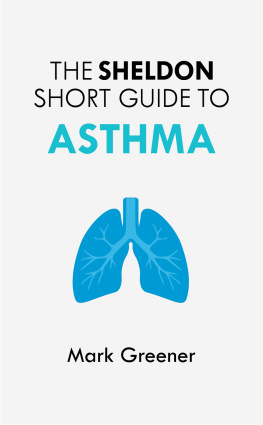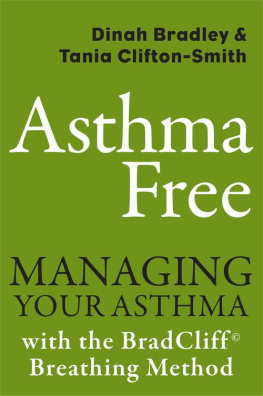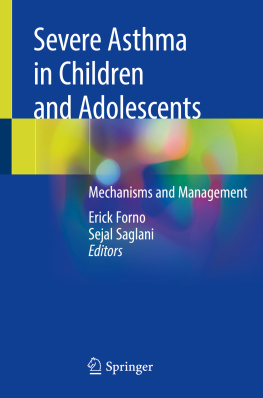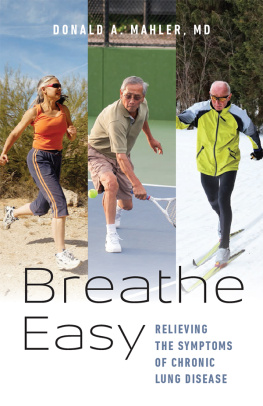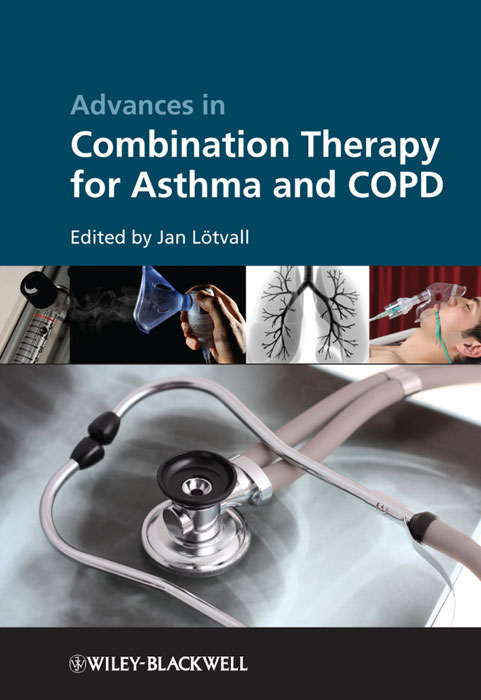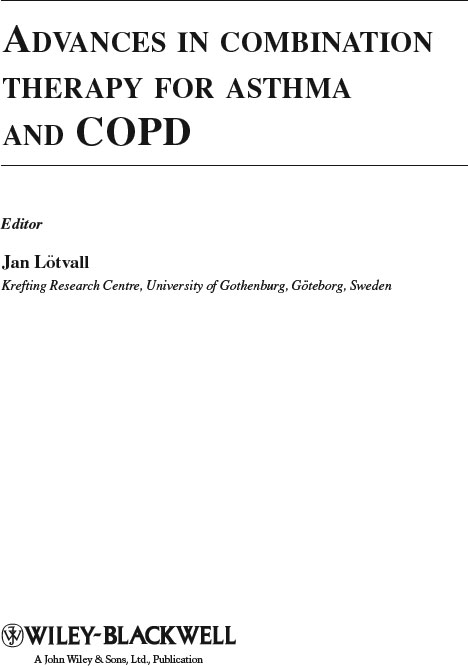This edition first published 2012
2012 John Wiley & Sons, Ltd
Wiley-Blackwell is an imprint of John Wiley & Sons, formed by the merger of Wileys global Scientific, Technical and Medical business with Blackwell Publishing.
Registered office:
John Wiley & Sons Ltd, The Atrium, Southern Gate, Chichester, West Sussex, PO19 8SQ, UK
Other Editorial Offices:
9600 Garsington Road, Oxford, OX4 2DQ, UK
111 River Street, Hoboken, NJ 07030-5774, USA
For details of our global editorial offices, for customer services and for information about how to apply for permission to reuse the copyright material in this book please see our website at www.wiley.com/wiley-blackwell
The right of the author to be identified as the author of this work has been asserted in accordance with the Copyright, Designs and Patents Act 1988.
All rights reserved. No part of this publication may be reproduced, stored in a retrieval system, or transmitted, in any form or by any means, electronic, mechanical, photocopying, recording or otherwise, except as permitted by the UK Copyright, Designs and Patents Act 1988, without the prior permission of the publisher.
Wiley also publishes its books in a variety of electronic formats. Some content that appears in print may not be available in electronic books.
Designations used by companies to distinguish their products are often claimed as trademarks. All brand names and product names used in this book are trade names, service marks, trademarks or registered trademarks of their respective owners. The publisher is not associated with any product or vendor mentioned in this book. This publication is designed to provide accurate and authoritative information in regard to the subject matter covered. It is sold on the understanding that the publisher is not engaged in rendering professional services. If professional advice or other expert assistance is required, the services of a competent professional should be sought.
The contents of this work are intended to further general scientific research, understanding, and discussion only and are not intended and should not be relied upon as recommending or promoting a specific method, diagnosis, or treatment by physicians for any particular patient. The publisher and the author make no representations or warranties with respect to the accuracy or completeness of the contents of this work and specifically disclaim all warranties, including without limitation any implied warranties of fitness for a particular purpose. In view of ongoing research, equipment modifications, changes in governmental regulations, and the constant flow of information relating to the use of medicines, equipment, and devices, the reader is urged to review and evaluate the information provided in the package insert or instructions for each medicine, equipment, or device for, among other things, any changes in the instructions or indication of usage and for added warnings and precautions. Readers should consult with a specialist where appropriate. The fact that an organization or Website is referred to in this work as a citation and/or a potential source of further information does not mean that the author or the publisher endorses the information the organization or Website may provide or recommendations it may make. Further, readers should be aware that Internet Websites listed in this work may have changed or disappeared between when this work was written and when it is read. No warranty may be created or extended by any promotional statements for this work. Neither the publisher nor the author shall be liable for any damages arising herefrom.
Library of Congress Cataloguing-in-Publication Data
Advances in combination therapy for asthma and COPD / [edited by] Jan Ltvall, William Busse.
p. ; cm.
Includes bibliographical references and index.
ISBN 978-0-470-72702-7 (cloth)
1. LungsDiseases, ObstructiveChemotherapy. 2. AsthmaChemotherapy. 3. Polypharmacy. 4. Chemotherapy, Combination. I. Ltvall, Jan. II. Busse, W. W. (William W.)
[DNLM: 1. Asthmadrug therapy. 2. Drug Therapy, Combination. 3. Pulmonary Disease, Chronic Obstructivedrug therapy. WF 553]
RC776.O3A33 2011
616.23061dc23
2011023057
A catalogue record for this book is available from the British Library.
This book is published in the following electronic format: ePDF: 9781119998631; WileyOnline Library: 9781119998624; epub: 9781119978466; Mobi: 9781119978473
Contributors
Ian M. Adcock
Airways Disease Section, National Heart and Lung Institute, Imperial College London, London, UK
Gary P. Anderson
Lung Disease Research Group, Departments of Pharmacology and Medicine, University of Melbourne, Parkville, Australia
Peter J Barnes
Section of Airway Disease, National Heart and Lung Institute, Imperial College London, London, UK
Eugene R. Bleecker
Wake Forest University Health Sciences, Center for Human Genomics and Personalized Medicine, Medical Center Boulevard, USA
William W. Busse
Division of Allergy and Immunology, Department of Medicine, University of Wisconsin, Madison, USA
Gaetano Caramori
Centre of Research on Asthma and COPD, University of Ferrara, Ferrara, Italy
Mario Cazzola
Unit of Respiratory Diseases, Department of Internal Medicine, University of Rome Tor Vergata, Rome, Italy
K. Fan Chung
Airways Disease Section, National Heart and Lung Institute, Imperial College London, London, UK
Ronald Dahl
Department of Respiratory Diseases, Aarhus University Hospital, Denmark
Sebastian L. Johnston
Department of Respiratory Medicine, National Heart and Lung Institute, MRC and Asthma UK Centre in Allergic Mechanisms of Asthma, Imperial College London, London, UK
Paul A. Kirkham
Airways Disease Section, National Heart and Lung Institute, Imperial College London, London, UK
Jan Ltvall
Krefting Research Centre, University of Gothenburg, Gteborg, Sweden
M. Diane Lougheed
Department of Medicine, Division of Respirology, Queen's University, Ontario, Canada
Bo Lundbck
Krefting Research Centre, University of Gothenburg, Sweden
Jonathan D.R. Macintyre
Department of Respiratory Medicine, National Heart and Lung Institute, MRC and Asthma UK Centre in Allergic Mechanisms of Asthma, Imperial College London, London, UK
Maria Gabriella Matera
Unit of Pharmacology, Department of Experimental Medicine, Second University of Naples, Naples, Italy
J. Morjaria
Department of Infection, Inflammation and Repair, University of Southampton, Southampton, UK
Desmond M. Murphy
McMaster University Medical Center, Ontario, Canada
Sharmilee M. Nyenhuis
Division of Allergy and Immunology, Department of Medicine, University of Wisconsin, Madison, USA
Paul M. OByrne
McMaster University Medical Center, Ontario, Canada
Denis E. ODonnell
Department of Medicine, Division of Respirology, Queen's University, Ontario, Canada
Josuel Ora
Clinical Research Fellow, Respiratory Investigation Unit, Kingston General Hospital and Queen's University, Ontario, Canada
Victor E. Ortega
Wake Forest University Health Sciences, Center for Human Genomics and Personalized Medicine, Medical Center Boulevard, USA
Riccardo Polosa
Ospedale Santa Marta, U.O.C di Medicina Interna e Medicina dUrgenza, Catania, Italy
J. Christian Virchow
Department of Pneumology / Intensive Care Medicine Klinik I / Zentrum fr Innere Medizin Universittsklinikum, Rostok, Germany
Preface
The management of both asthma and COPD has improved substantially over the last 25 years, with the introduction of new inhaled therapies, primarily through local treatment with inhaled glucocorticoids and long-acting beta-2-agonists as well as long-acting anti-cholinergic drugs. Despite this improvement, evidence argues that there are extensive unmet needs in both disease groups, and further development of management is needed. In recent years, a substantial number of new medicines are being developed, and many of those are due to become clinically available shortly. For example, new once daily long-acting beta-2-agonists have become available for the treatment of obstructive lung disease. Furthermore, a series of combination products that have the potential to have advantages to current therapies are in different stages of development. The specific mechanisms by which these therapies function, how the components affect disease processes, and how these drugs can interact, are discussed in detail in the different chapters of this book.


